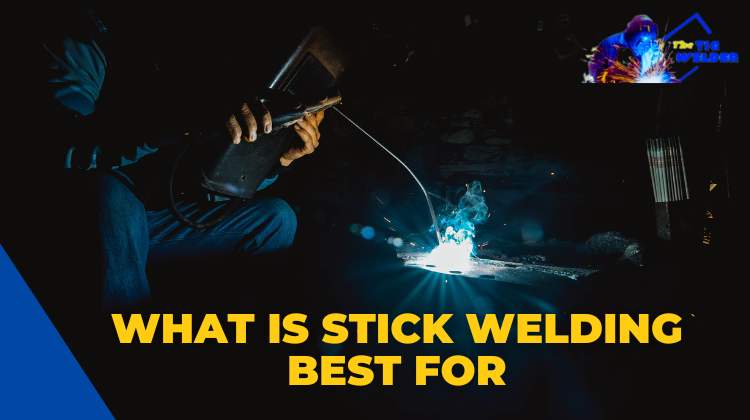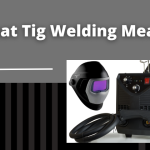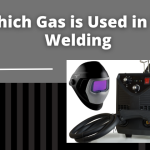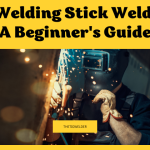Stick welding, also known as shielded metal arc welding (SMAW), is a manual arc welding process that uses a consumable electrode coated in flux to lay the weld. The electrode is made of a metal wire coated with a flux material that helps to protect the weld pool and removes contaminants from the weld area.
To perform stick welding, the welder first prepares the workpiece by cleaning and preparing the surfaces to be welded. They then set up the welding machine, which includes attaching the electrode holder and connecting the power cables. The welder dons protective gear, such as a welding helmet, gloves, and a flame-resistant jacket.
Next, the welder strikes an arc between the electrode and the workpiece by touching the electrode to the workpiece and then pulling it slightly away. This creates a spark and an arc of electricity that melts the electrode and the base metal, forming a weld pool. As the welder moves the electrode along the joint, the weld pool solidifies behind it, forming the weld bead. The welder must maintain a consistent arc length and manipulate the electrode to control the size and shape of the weld bead.
Once the weld is complete, the welder removes the electrode and allows the weld to cool. They may also use a wire brush or grinding tool to remove slag or excess flux from the weld.
Overall, stick welding is a relatively simple process that can be performed with minimal equipment and training. It is well-suited for various applications, including construction and fabrication, maintenance and repair, and automotive and transportation. However, it is not as efficient as other welding methods in thin materials, and the welds may have a lower-quality finish.

Advantages of Stick Welding
There are several advantages to using stick welding as a method of joining metal components:
- Simplicity: Stick welding is a relatively simple process that most people with basic training and practice can learn. It does not require complex or expensive equipment, making it a cost-effective option for many applications.
- Cost-effectiveness: In addition to the low equipment cost, stick welding electrodes are generally less expensive than other welding consumables. This can make stick welding a more economical choice for certain projects.
- Versatility: Stick welding can be performed on various metals, including carbon steel, stainless steel, and aluminum. It can also be used on dirty or rusty materials, making it well-suited for maintenance and repair work.
- Portability: Stick welding equipment is relatively lightweight and portable, making it easy to take to a job site or use in a shop setting.
Stick welding is a reliable and cost-effective method that is well-suited for various applications, including construction and fabrication, maintenance and repair, and automotive and transportation. It is a simple and versatile process used on various materials and settings.
Applications of Stick Welding
Stick welding, also known as shielded metal arc welding (SMAW), is a manual arc welding process that uses a consumable electrode coated in flux to lay the weld. It is well-suited for a variety of applications, including:
- Construction and fabrication: Stick welding is often used in the construction industry for structural steel fabrication and the assembly of building components. It is also used to fabricate equipment and machinery, such as conveyors and tanks.
- Maintenance and repair: Stick welding is a reliable and cost-effective method for repairing metal structures and equipment. It can be used on dirty or rusty materials, making it well-suited for maintenance and repair work.
- Agricultural and farming equipment: Stick welding is commonly used in the repair and maintenance of agricultural and farming equipment, such as tractors, trailers, and harvesters.
- Automotive and transportation: Stick welding is often used in the automotive and transportation industries to repair and maintain vehicles and equipment. It is also used in the fabrication of custom automotive parts and accessories.
Overall, stick welding is a versatile process that is well-suited for various applications in various industries. It is a reliable and cost-effective method of welding that is simple to learn and perform, making it a popular choice for many professionals.
Limitations of Stick Welding
While stick welding is a reliable and cost-effective method of welding, it does have some limitations:
- Inefficiency in thin materials: Stick welding is less effective than other handling methods in thin materials, such as TIG or MIG welding. The electrode can cause excessive heat input, leading to warping and distortion in thin materials.
- Limited aesthetics: Stick welding does not produce as smooth or uniform of a weld bead as other methods, such as TIG welding. This can affect the overall appearance of the finished weld.
- Potential for slag inclusion: The flux coating on the electrode produces slag as it is consumed during the welding process. If not properly removed, this slag can be trapped in the weld bead, reducing strength and corrosion resistance.
- Limited penetration: Stick welding typically does not penetrate as deeply as other methods, such as MIG or TIG welding. This can limit its use in certain applications where deep penetration is required.
While stick welding is a reliable and cost-effective method, it is only suitable for some applications. Its limitations include inefficiency in thin materials, limited aesthetics, the potential for slag inclusion, and limited penetration.
Conclusion
In conclusion, stick welding, also known as shielded metal arc welding (SMAW), is a manual arc welding process that uses a consumable electrode coated in flux to lay the weld. It is a simple and cost-effective method of welding that is well-suited for various applications, including construction and fabrication, maintenance and repair, and automotive and transportation.
However, stick welding has some limitations, including inefficiency in thin materials, limited aesthetics, the potential for slag inclusion, and limited penetration. These limitations may make it less suitable for certain applications or industries.
Stick welding is a reliable and cost-effective method that is simple to learn and perform, making it a popular choice for many professionals. Its strengths and limitations should be considered when deciding on the most appropriate welding method for a specific project.

It’s been years since I got into welding as a side hustle. It’s been so long since Doing All kinds of welds for business and pleasure as this is my hobby. Being in this field I have learned from hands-on-experience also came to know what gears work and what doesn’t. The Tig Welder is my own platform where I use to share my experience.






Leave a Reply